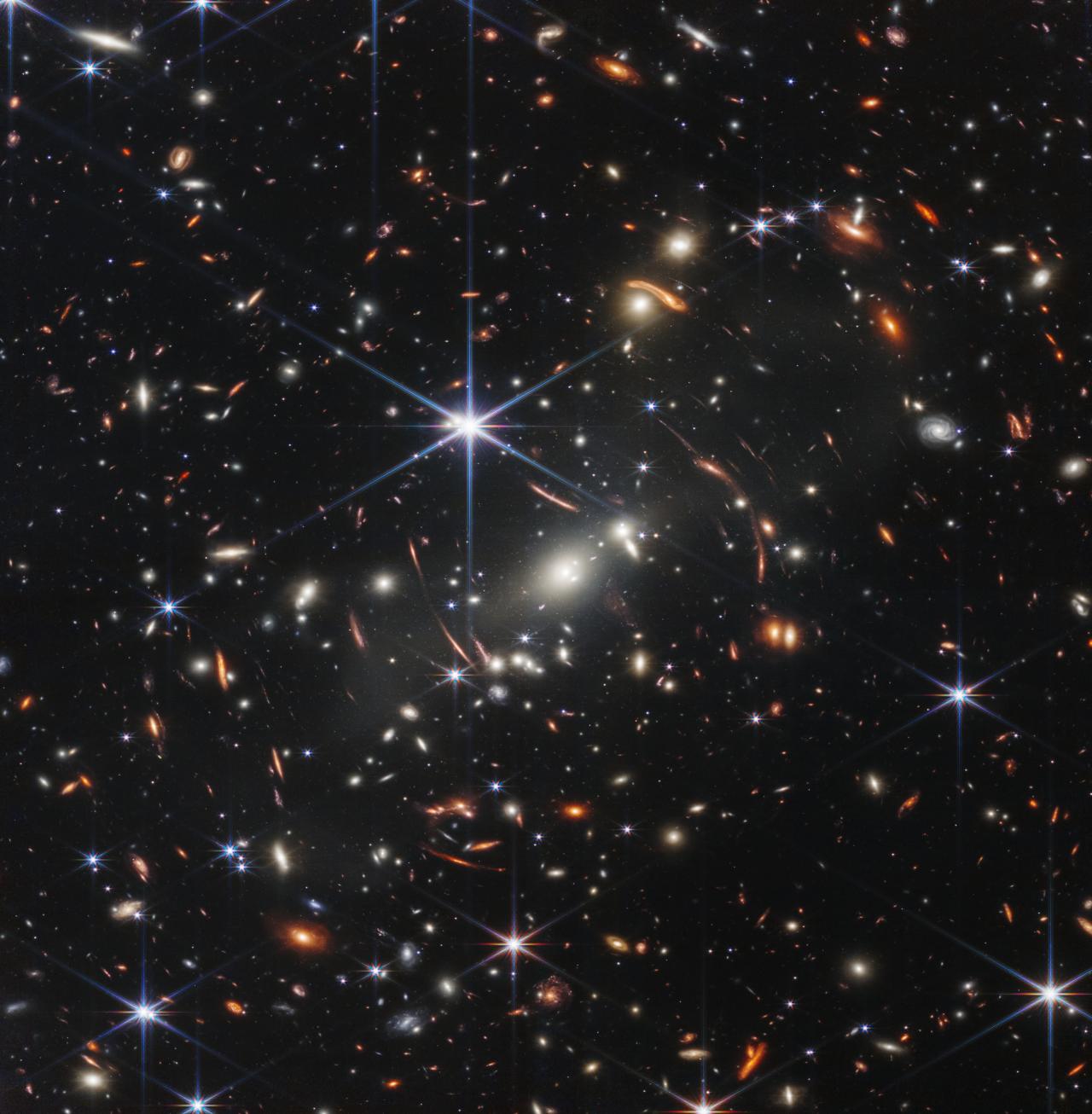JWST has seen intracluster light (ICL), the very faint emission produced by stars pulled out of their galaxies as these cosmic islands interact inside a cluster. Seeing this light has big implications not just for understanding the evolution of galaxies and galaxy clusters, but also for a mystery crucial to our whole understanding of the cosmos.
JWST’s deep field image of SMACS-J0723.3-7327 was the first science observation published from the space observatory. Its sharpness is incredible and twice as deep as what we can see with Hubble. Given that JWST sees the universe in infrared light, the observations allow for the study of galaxies that are much further away.
As the universe expands, the light of distant galaxies is “stretched” and pushed towards redder wavelengths in a phenomenon similar to the doppler shift we can hear from, say, a passing ambulance where the pitch changes whether it’s approaching or moving away from you.
“In this study, we show the great potential of JWST for observing an object which is so faint,” Mireia Montes, the first author of the article, said in a statement from the Instituto de Astrofísica de Canarias. “This will let us study galaxy clusters which are much further away, and in much greater detail.”

Image of the JWST’s First Deep Field that has made it possible to study the intra-cluster light of the SMACS-J0723.3-7327 cluster. Image credit: NASA, ESA, CSA, STScI
Now, while JWST is great, this light is still extremely faint and the galaxies in the cluster are extremely bright so the task is not accomplished by observations alone. It also requires techniques to analyze the observations in a way that the emissions can be isolated from the more luminous sources in the image. The data obtained paints a picture of how the galaxy cluster is evolving.
“Analyzing this diffuse light we find that the inner parts of the cluster are being formed by a merger of massive galaxies, while the outer parts are due to the accretion of galaxies similar to our Milky Way,” explained Montes.
But galaxy evolution is not the only crucial factor here. Our best understanding of the universe requires the presence of an invisible (and still hypothetical) substance known as dark matter that only interacts gravitationally, so it does not clump and it stretches around galaxies. In a galaxy cluster, with hundreds if not thousands of galaxies, dark matter spreads across and around the whole cluster, and the ICL is a way to trace it.
“The JWST will let us characterize the distribution of the dark matter in these enormous structures with unprecedented precision, and throw light on its basic nature,” concludes Ignacio Trujillo, the second author of the article.
The article is published in The Astrophysical Journal Letters.
Source Link: JWST Spots Incredibly Faint "Ghostly" Light Emitted Between Galaxies